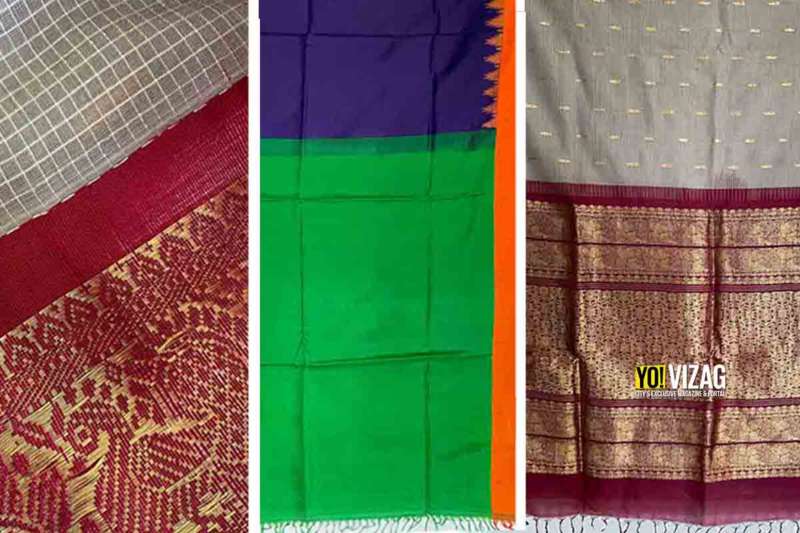
India’s handloom sector is the second-largest employer in the country after agriculture, employing more than 40 lakh people. From Kashmir in the extreme north to Kanyakumari in the south, every region has its own signature weaves. Celebrating the rural indigeneity, Rajeshwari Mavvuri, a handloom and handicraft enthusiast from Vizag, takes us to Gadwal in Telangana, the land of master craftsmen who once weaved saris that fit into a matchbox.
During these testing times of lockdown and restrictions in movement, technology not only keeps us sane but also fuels our dreams. We are told that we will soon be able to take a tour of all the most exotic locations on earth and visit the so-called seven wonders of the world. I dare you!
Think about the experience of taking a stroll in a temple. For instance, let us think of the temples of Chennakesava and Jogulamba when the thousand splendid suns are galloping towards us. Lest we forget the sounds of dawn. The interplay between the rustling of leaves and the Gadwal sari is literally an experience beyond reality. Let alone virtual.
The small town of Gadwal is beautiful in more than one way. The fort, the temple and the sari have countless stories to offer. One of many is the trilogy of Gadwal, a tale of cotton body, silk border, and zari pallu. And guess what? Imagine a million stories in your pocket. No. Again, we are not talking about a gadget. We are referring to a finely weaved Gadwal sari that fits into a matchbox.
Although the town of Gadwal was a vassal under the Nizam dynasty, the saris received patronage from local kings. Back in the day, Raja Seetaram Bhupal sent three weavers to Benaras in 1922 to learn different weaving techniques. Though these weavers were trained in Benaras, there has been no influence of Banarasi weave on the Gadwal. Later, Maharani Adilakshmi Devamma encouraged the cotton body sari with the kuttu technique (attakatam – to join) attached end-piece or the pallu. The weavers continue this technique to this day.
Gadwal, situated near Maharashtra and Karnataka, has strong design links to the Kornad saris of South India and the silk border-cotton field saris of East Central India. Every year, Lord Venkateswara Swamy’s Brahmotsavam is officiated with an offering of a Gadwal sari to the deities. Gadwal saris are considered sacred and are worn during auspicious ceremonies and festivals. No wonder, it is a must-have piece of every bride’s trousseau.
Usually, Gadwal saris are woven as fine cotton saris with either mulberry or tussar silk pallu, and border. On rare occasions, pure-silk saris are woven too. The speciality of the Gadwal saris is their bright and contrasting colours, Kotakomma (Temple) technique, and the kuttu or Kuppadam or Tippadam (the interlocked weft) technique.
Today, in contrast to the original cotton Gadwal sari, silk saris from Gadwal rule the roost. This can be majorly attributed to the lack of demand for cotton saris that cannot be priced as high as their silk counterparts. Consequently, the number of weavers that take up cotton saris in Gadwal is decreasing.
The dyed yarns are sourced from Chirala. The weavers of Gadwal use the kuttu technique to magically weave these yarns into a beautiful sari. And it takes at least two expert weavers to work for 4 to 8 days (depending on the complexity). The fashion designers of a Gadwal sari build motifs by drawing inspiration from nature: peacock, paisley and swans, and temple architecture, while the field/ body of the sari is either checks or buttis. From the dancing peacocks, and exquisite swans to the intricate paisley, all of them come to life on a beautiful canvas. That is the story of a Gadwal sari.
The temple bells can stop ringing but we continue to hear the sound of the divine. It is either the anklet of the Goddess. If not, it definitely is the rustling of Her Gadwal sari.
Number of weavers to weave a sari: Two
Number of days to weave a sari: 5-8 days depending on the complexity
Technique: Kuttu, Kuppadam
Type of Loom: Pit loom
Specialty: Bright contrast colours, Cotton field and silk border and pallu
Field/Body: Plain or checks
Border: 3-4 inch traditional zari border
Motifs: Peacock, swans, flowers, paisleys
About the Author: Rajeshwari Mavvuri is an active member of the Crafts Council of Andhra Pradesh. She endeavours to make a difference to the Indian art and artisans alike. She is just a message away on Instagram: @rajeswarimavuri
This post was last modified on 21/09/2020 10:51 am
The Jana Sena party chief addressed a public meeting at Poorna Market junction in Visakhapatnam…
Tobacco farmers in Andhra Pradesh are poised to benefit from a significant decrease in crop…
The Steel City of Vizag is all set for a star-studded campaign on 2 and…
In the history of Vizag, our city has witnessed some cruel summers, and it looks…
Speaking on the upcoming election, Dr A Mallikarjuna, the Collector and District Election Officer of…
Candidates contesting in the general elections slated for 13 May 2024 are leaving no stone…
Leave a Comment